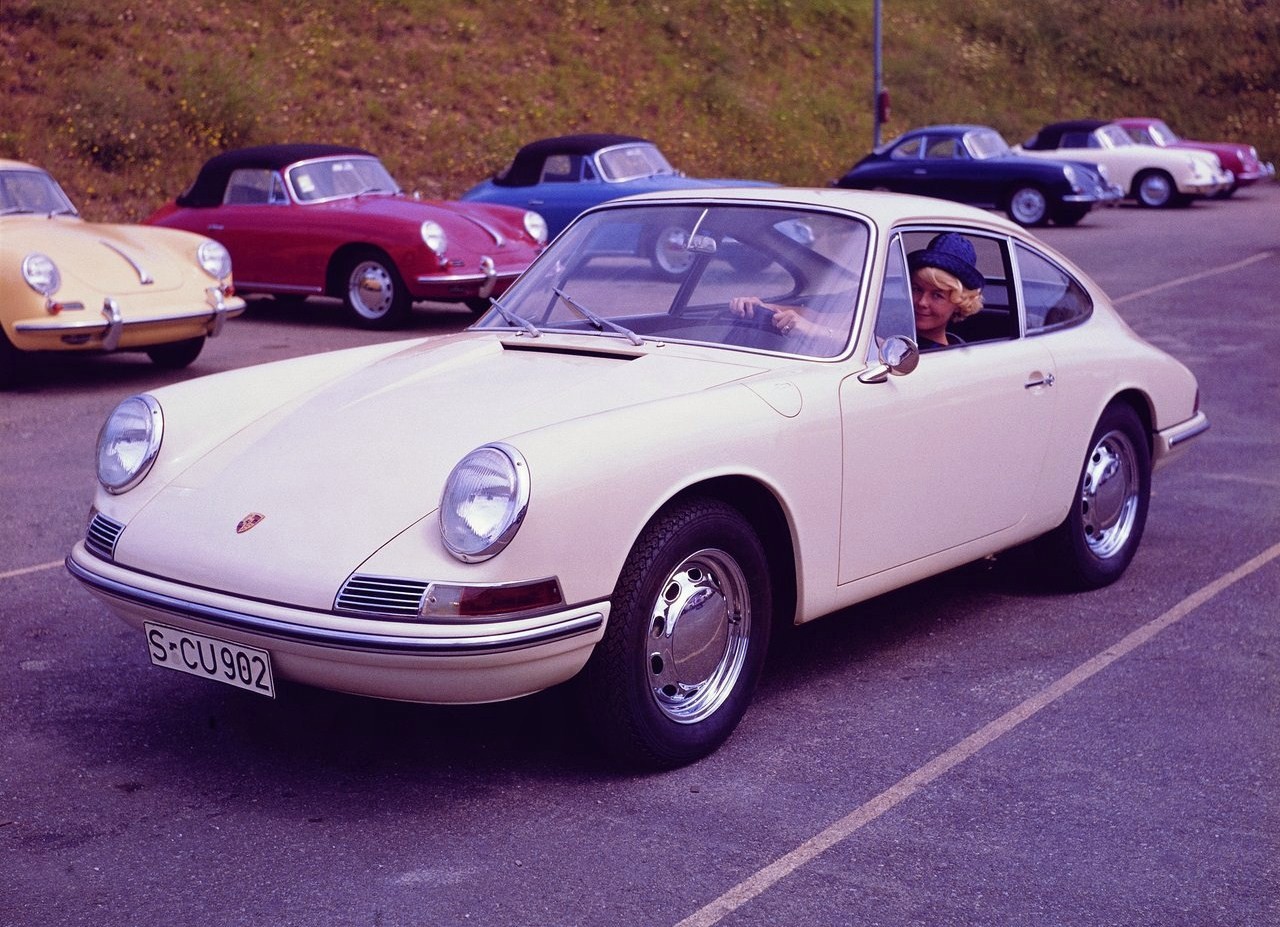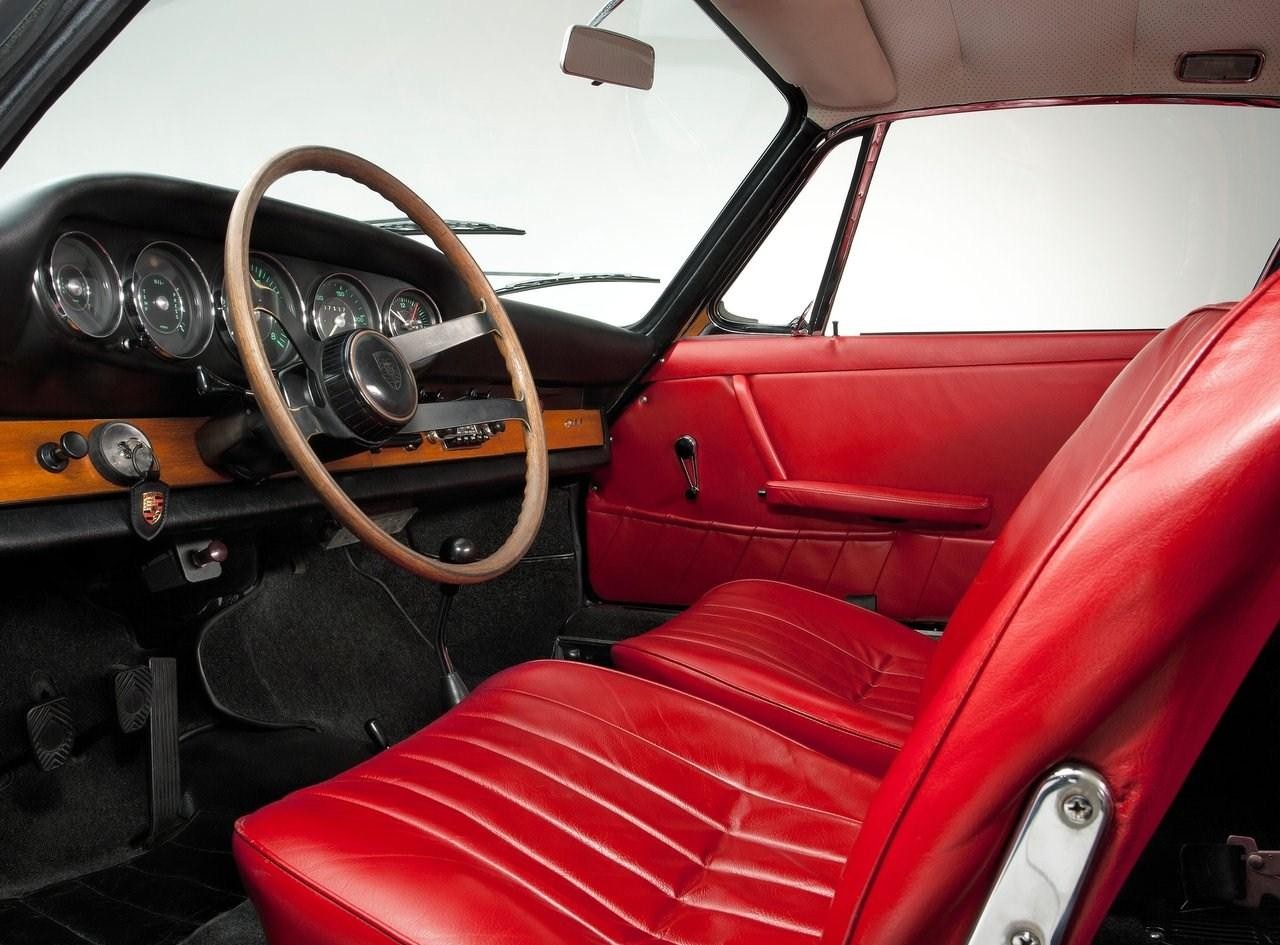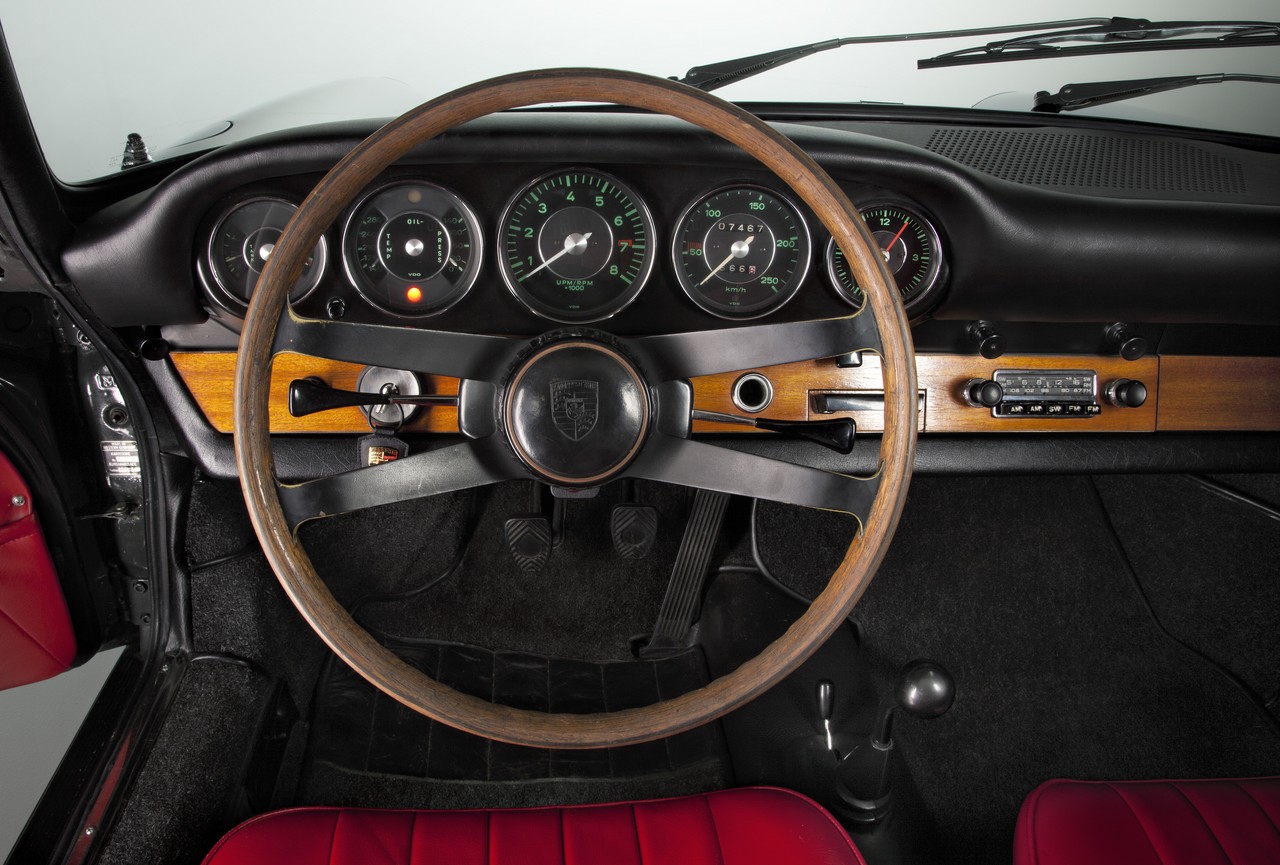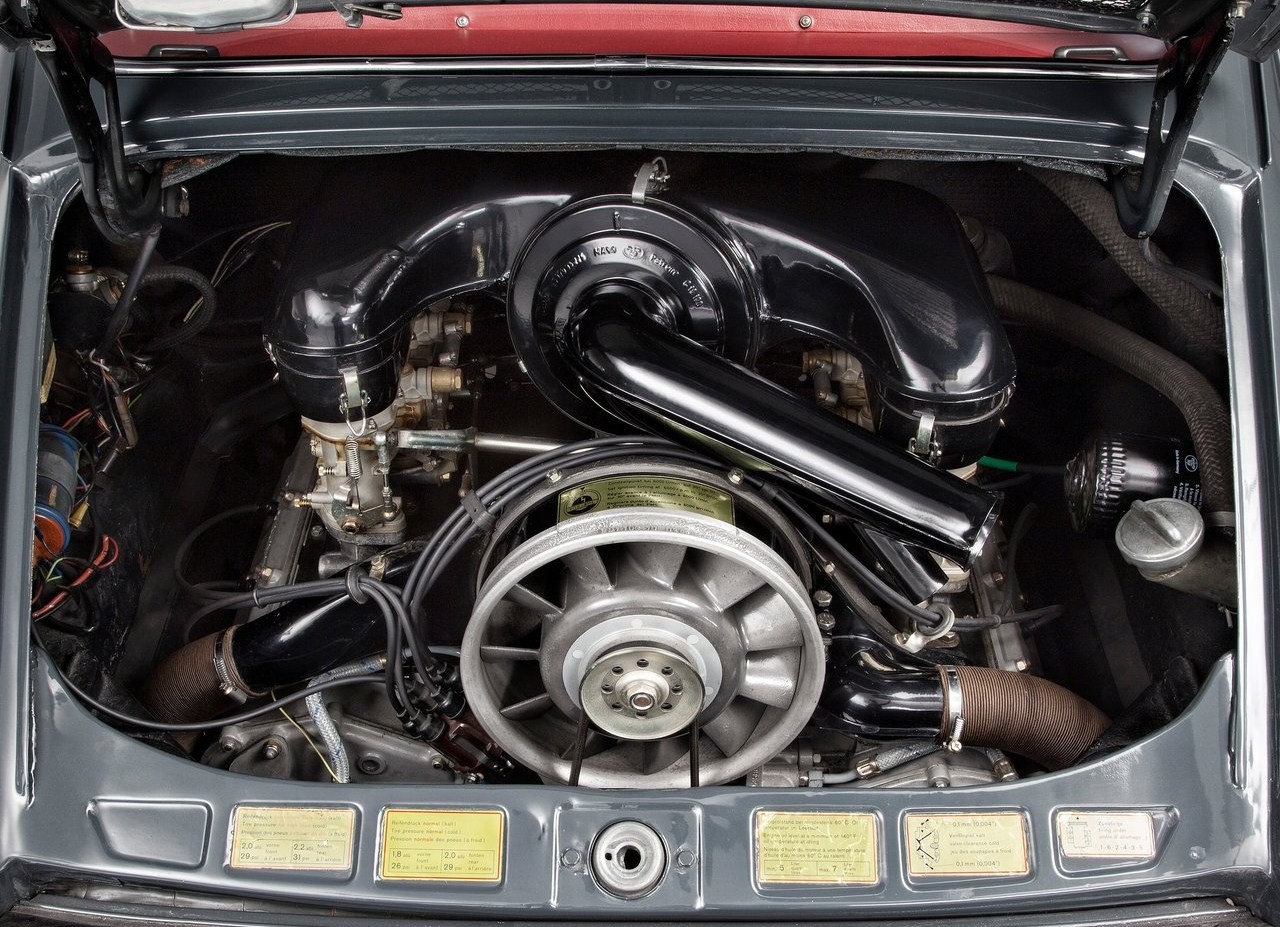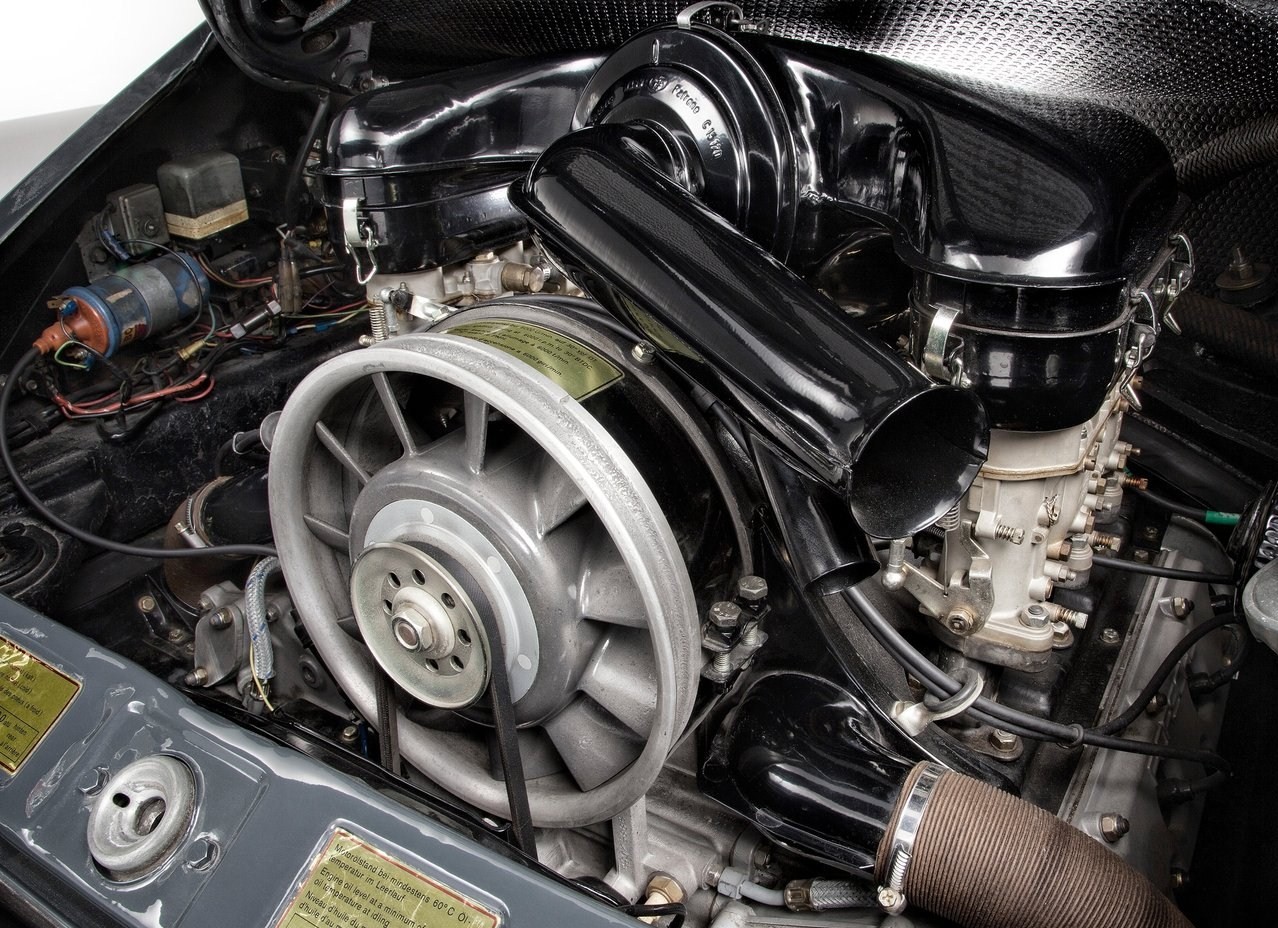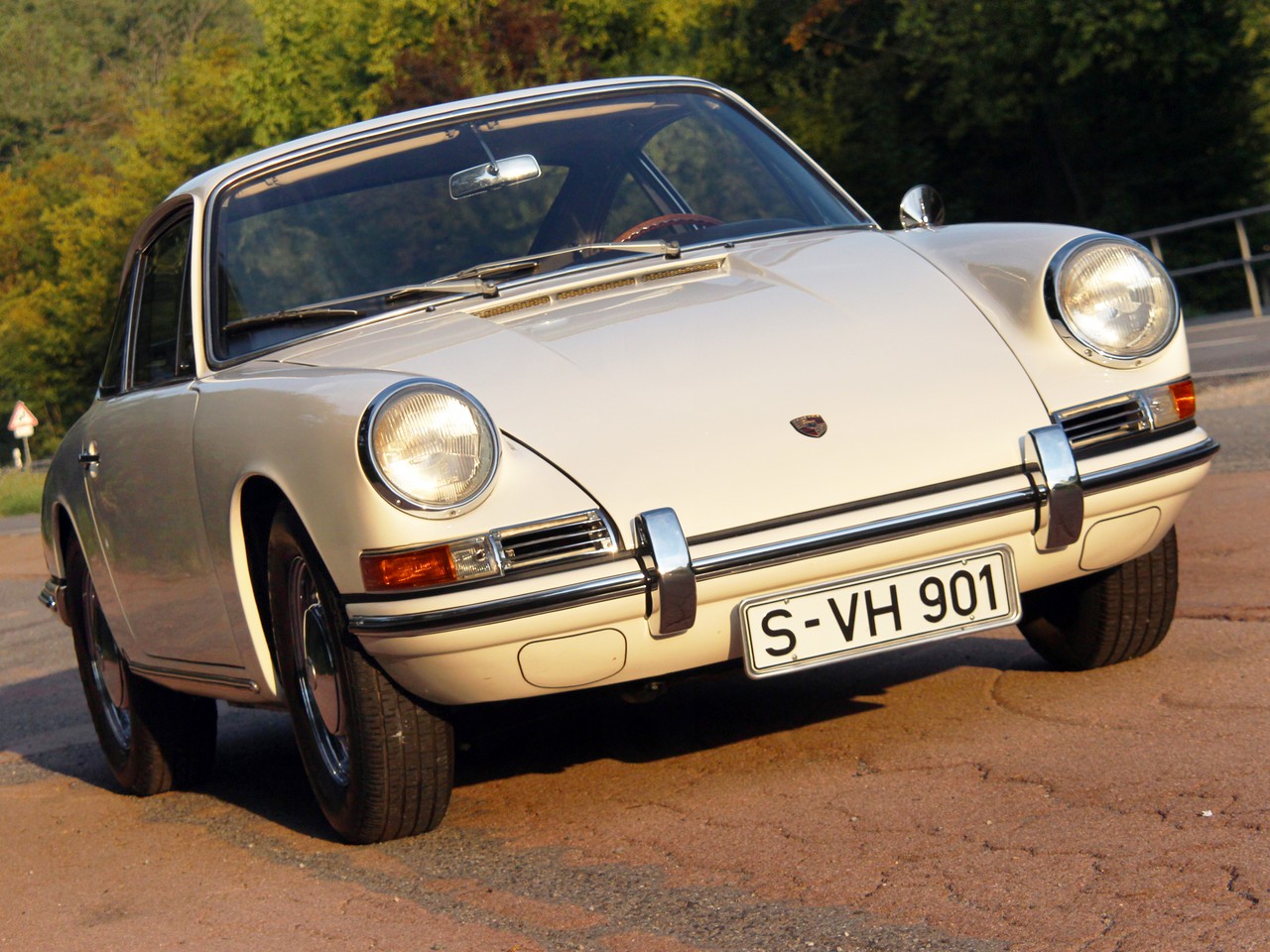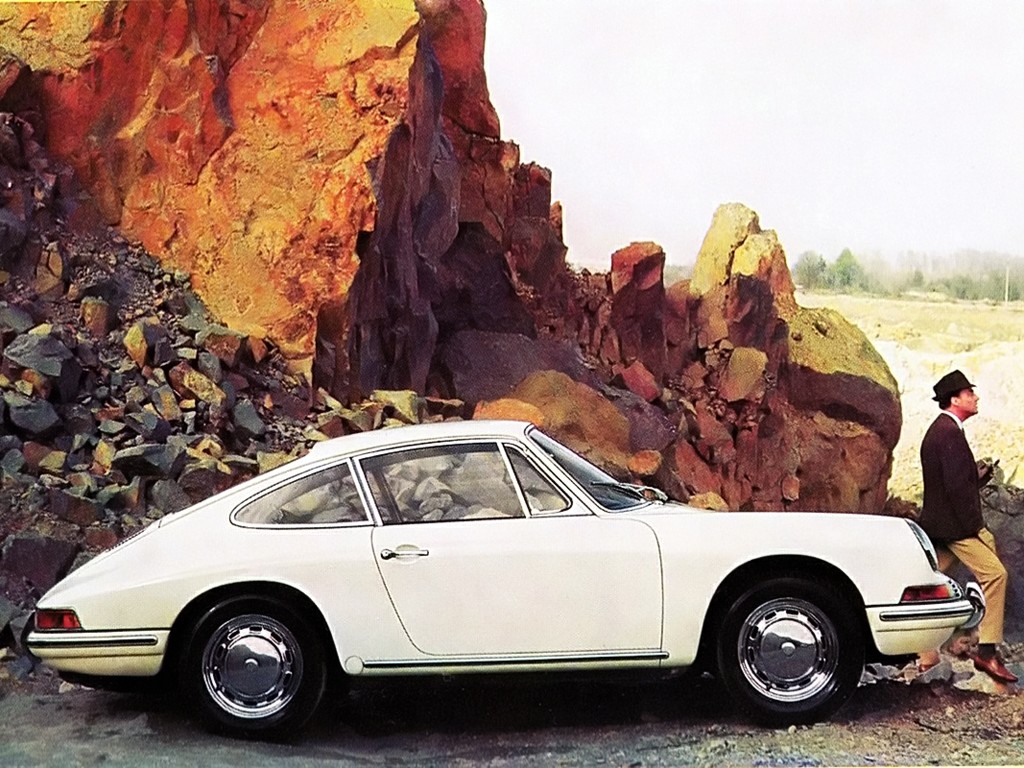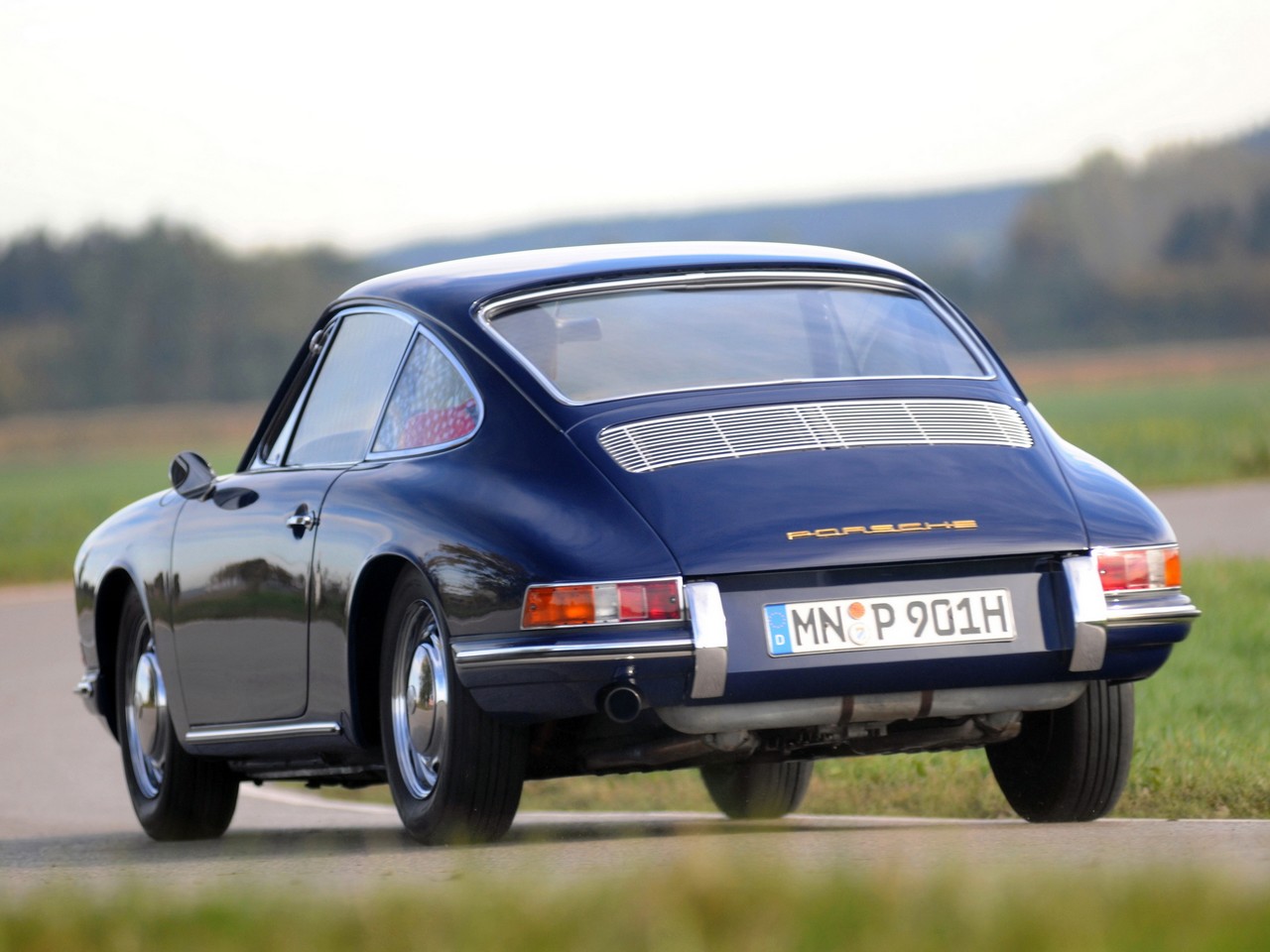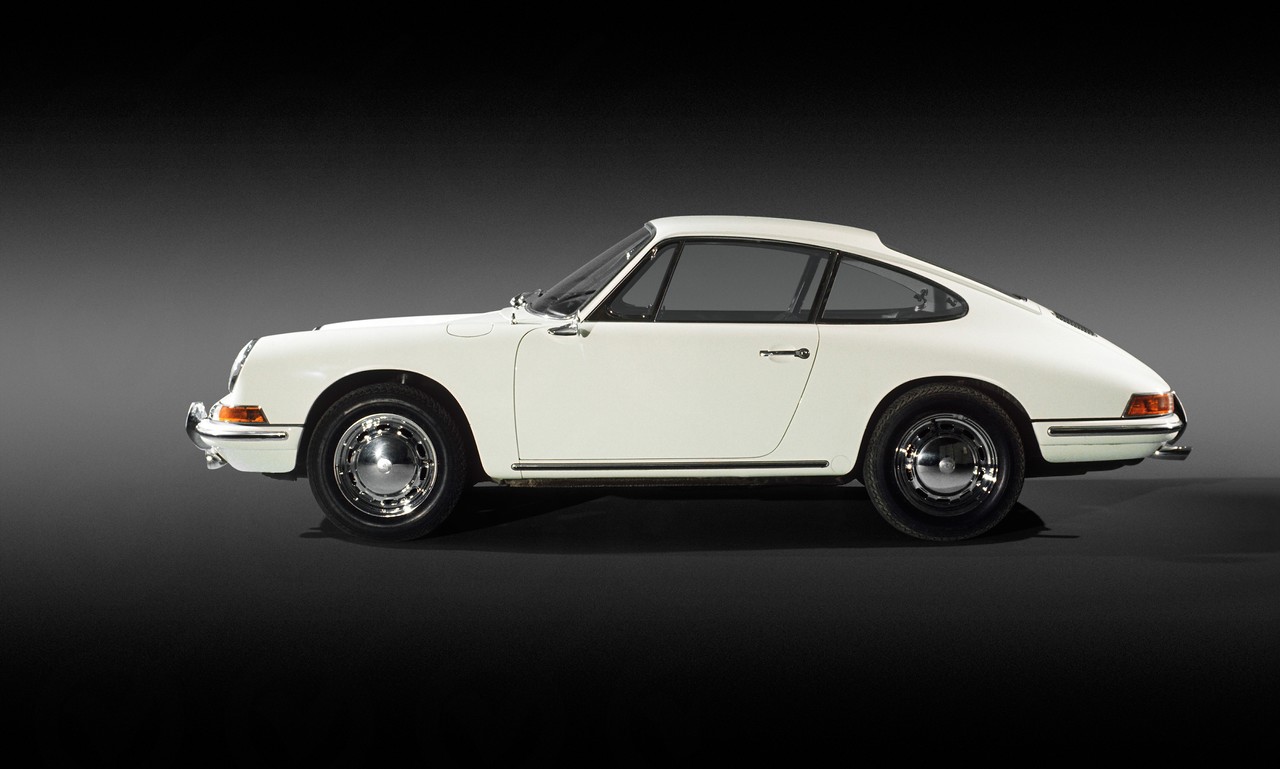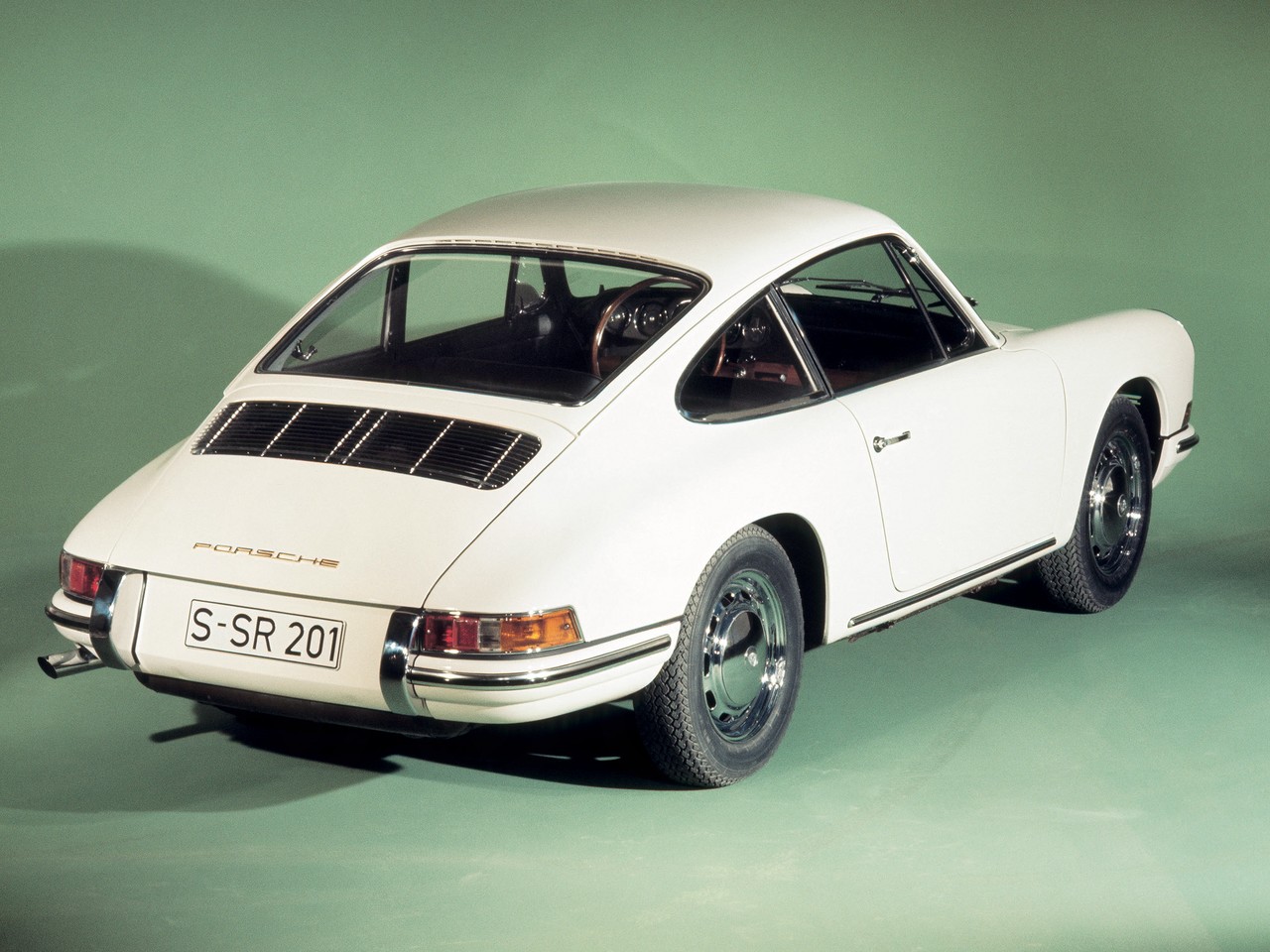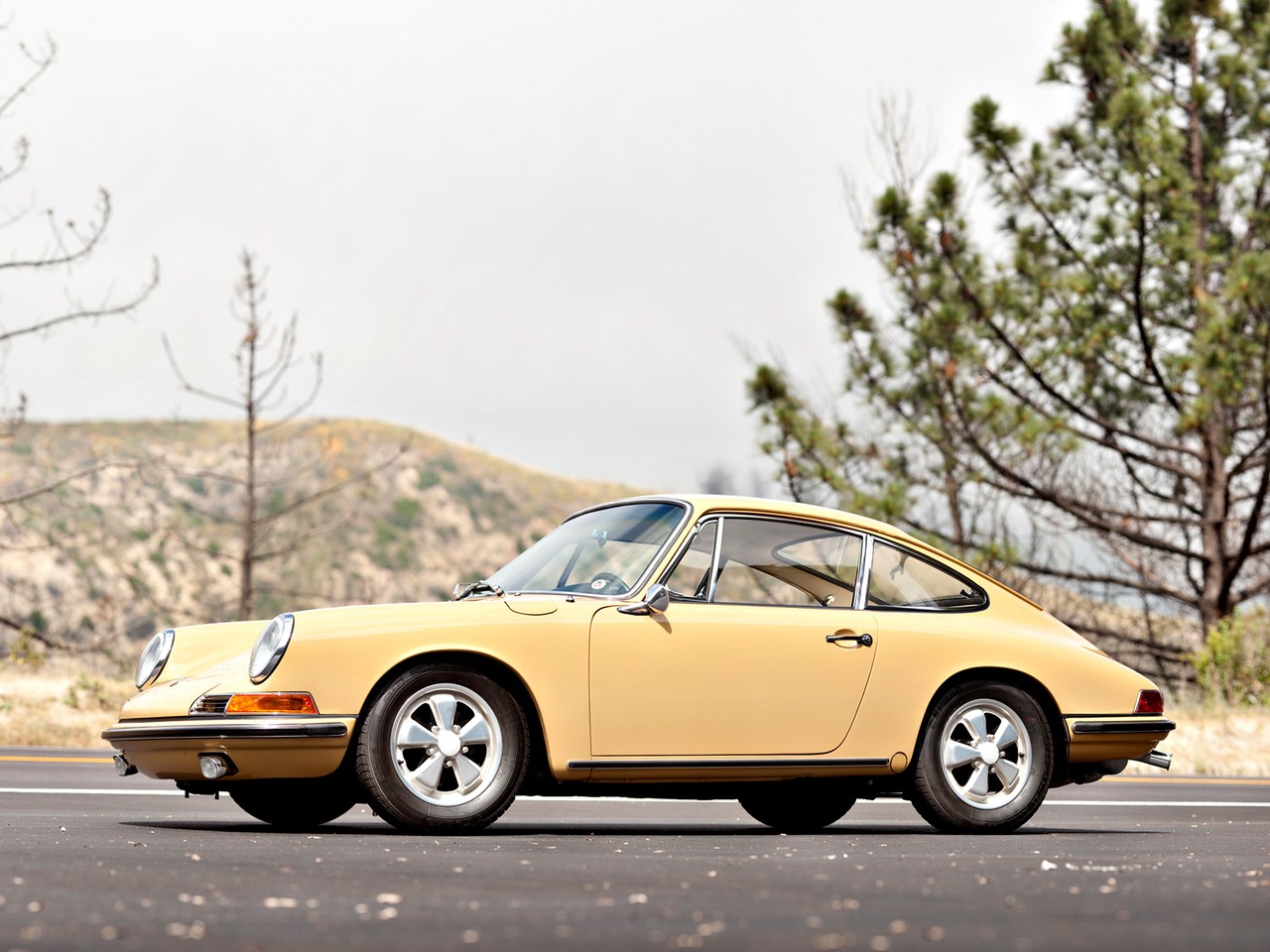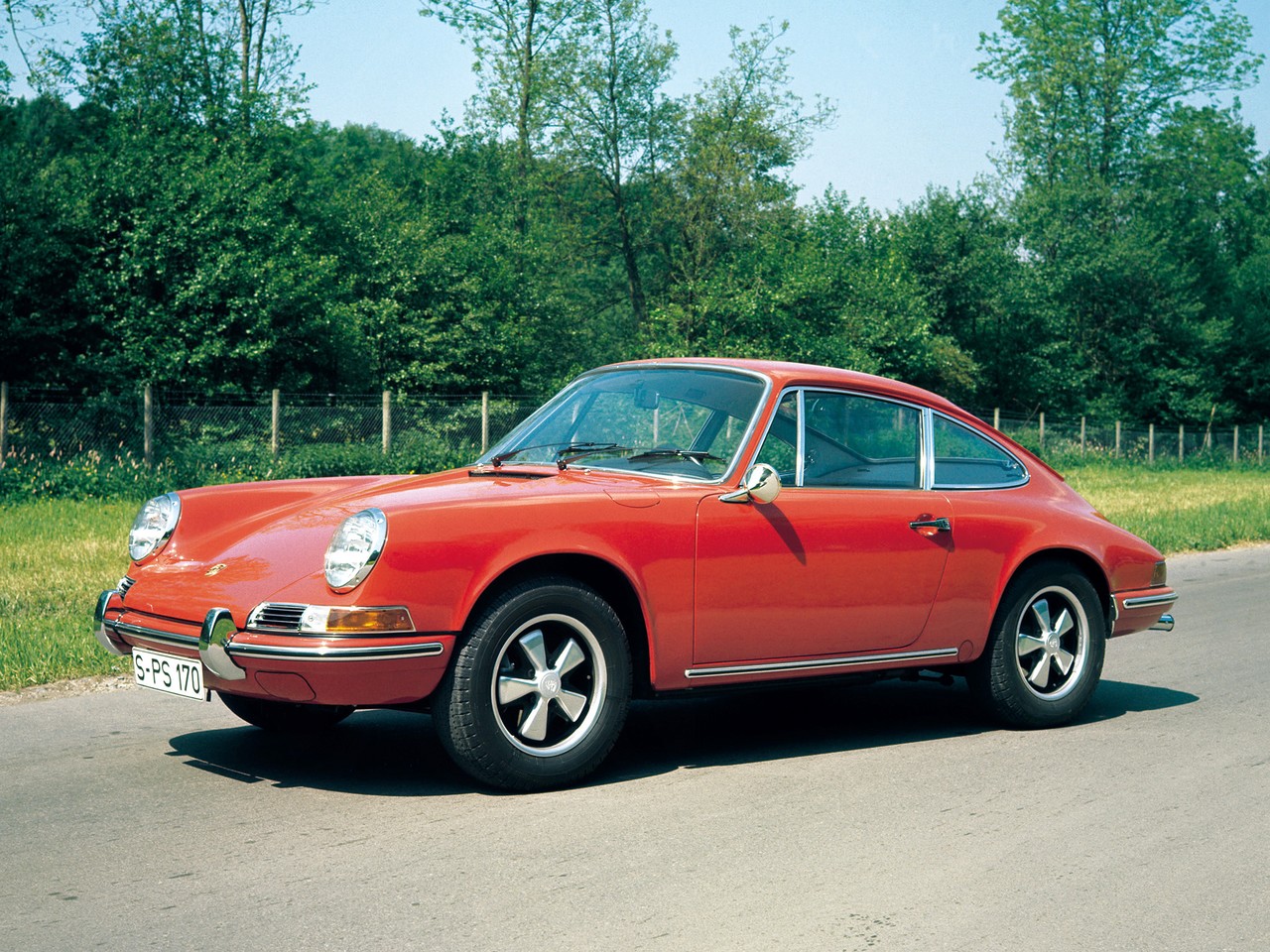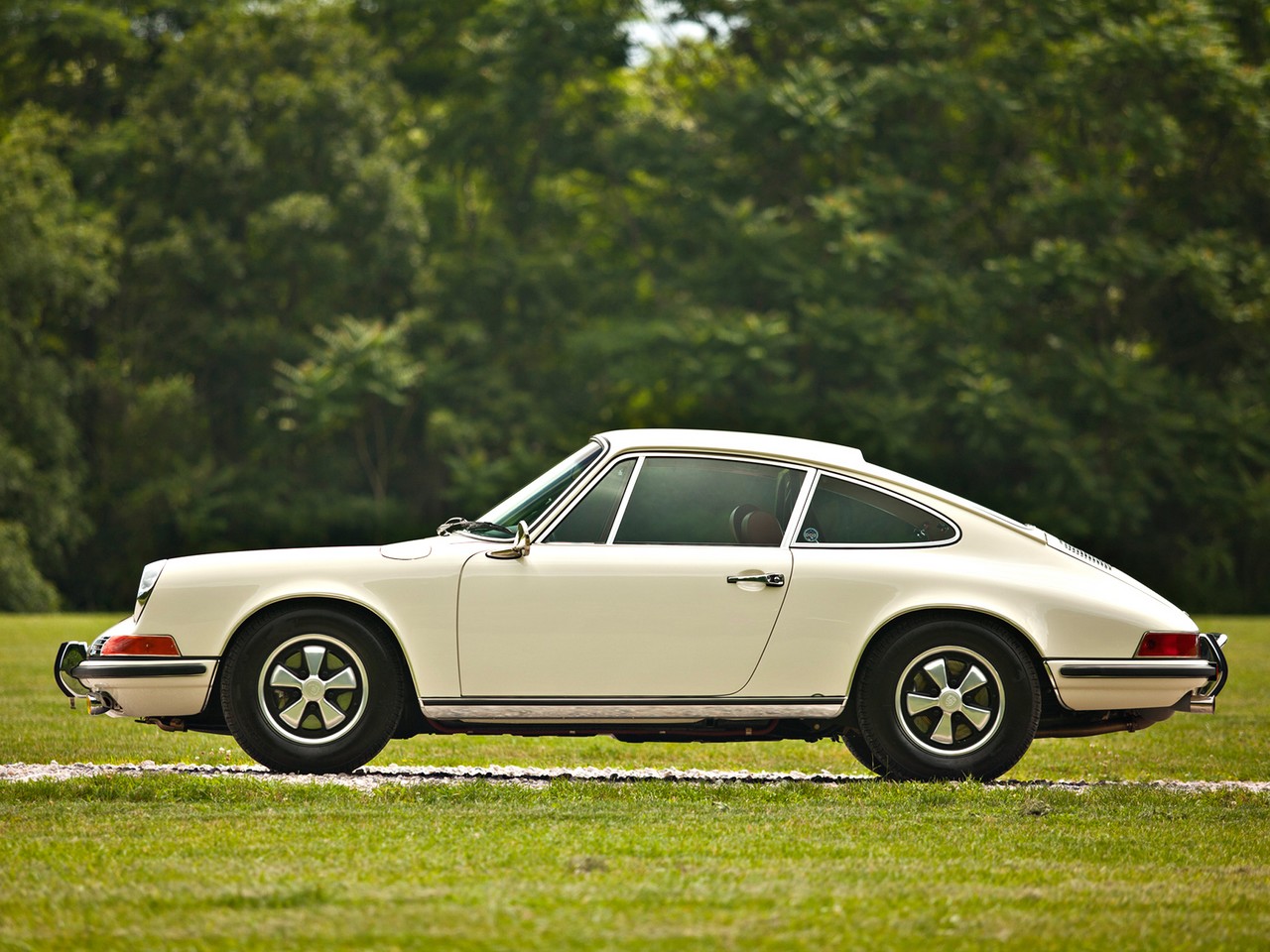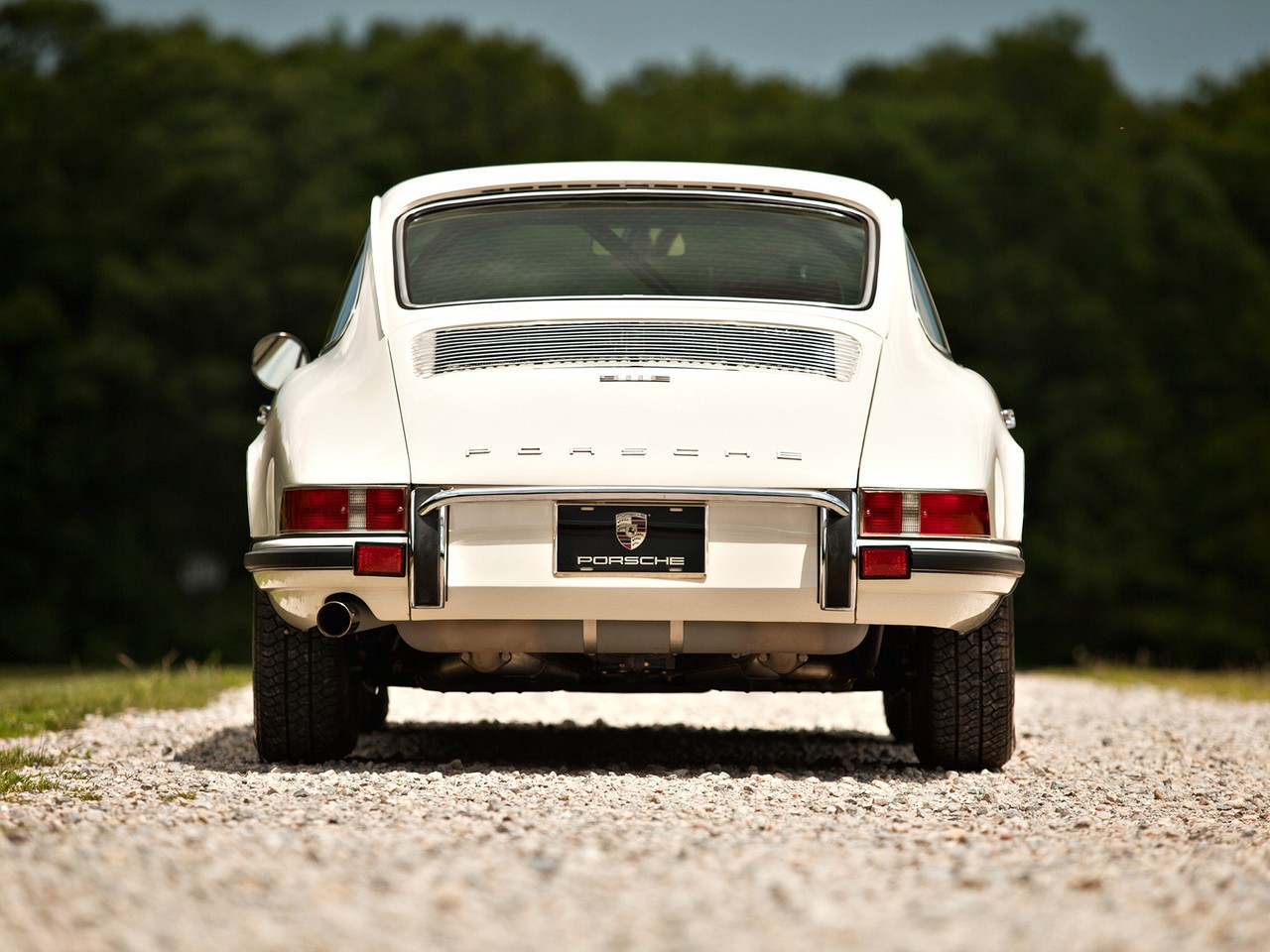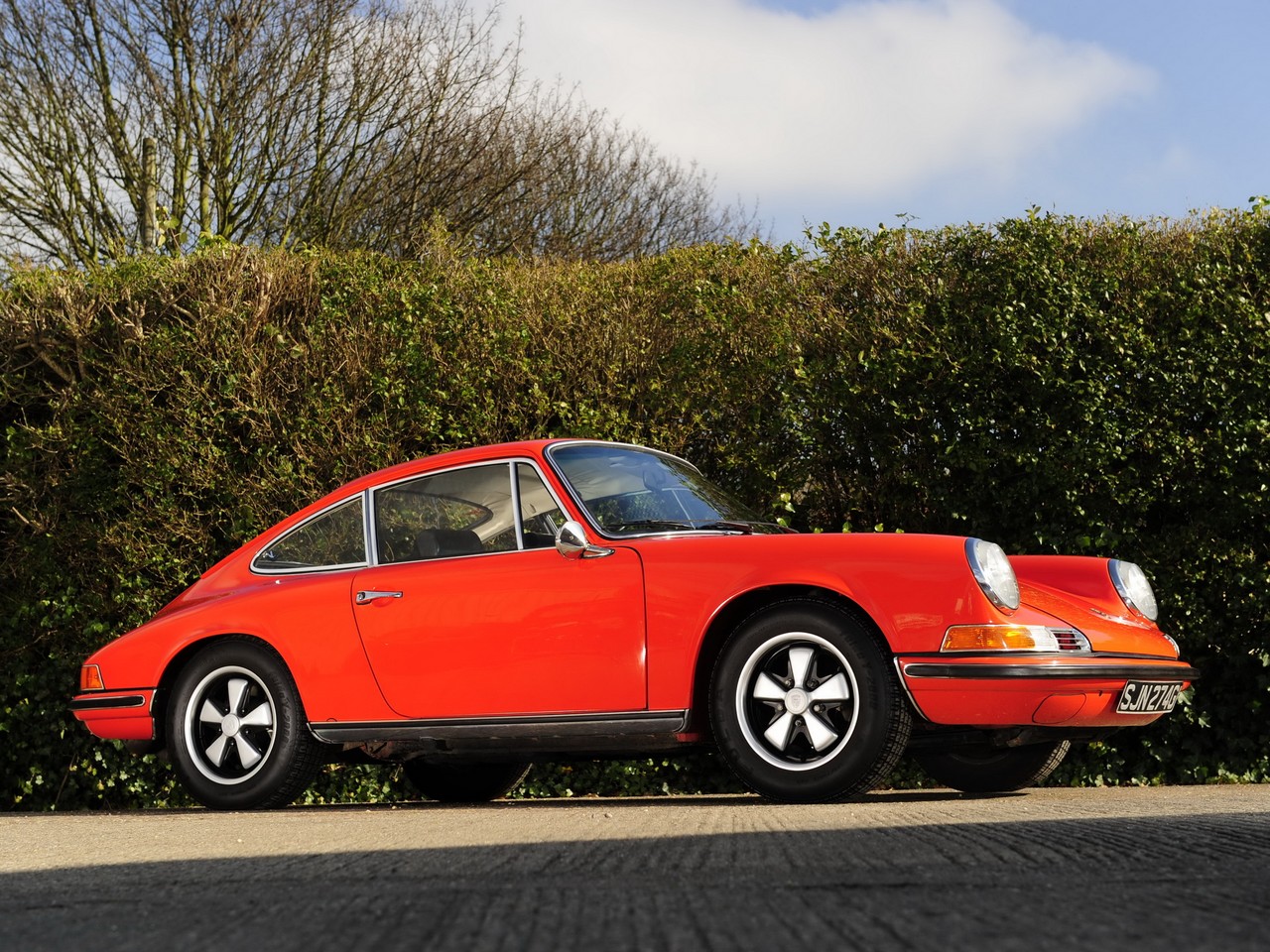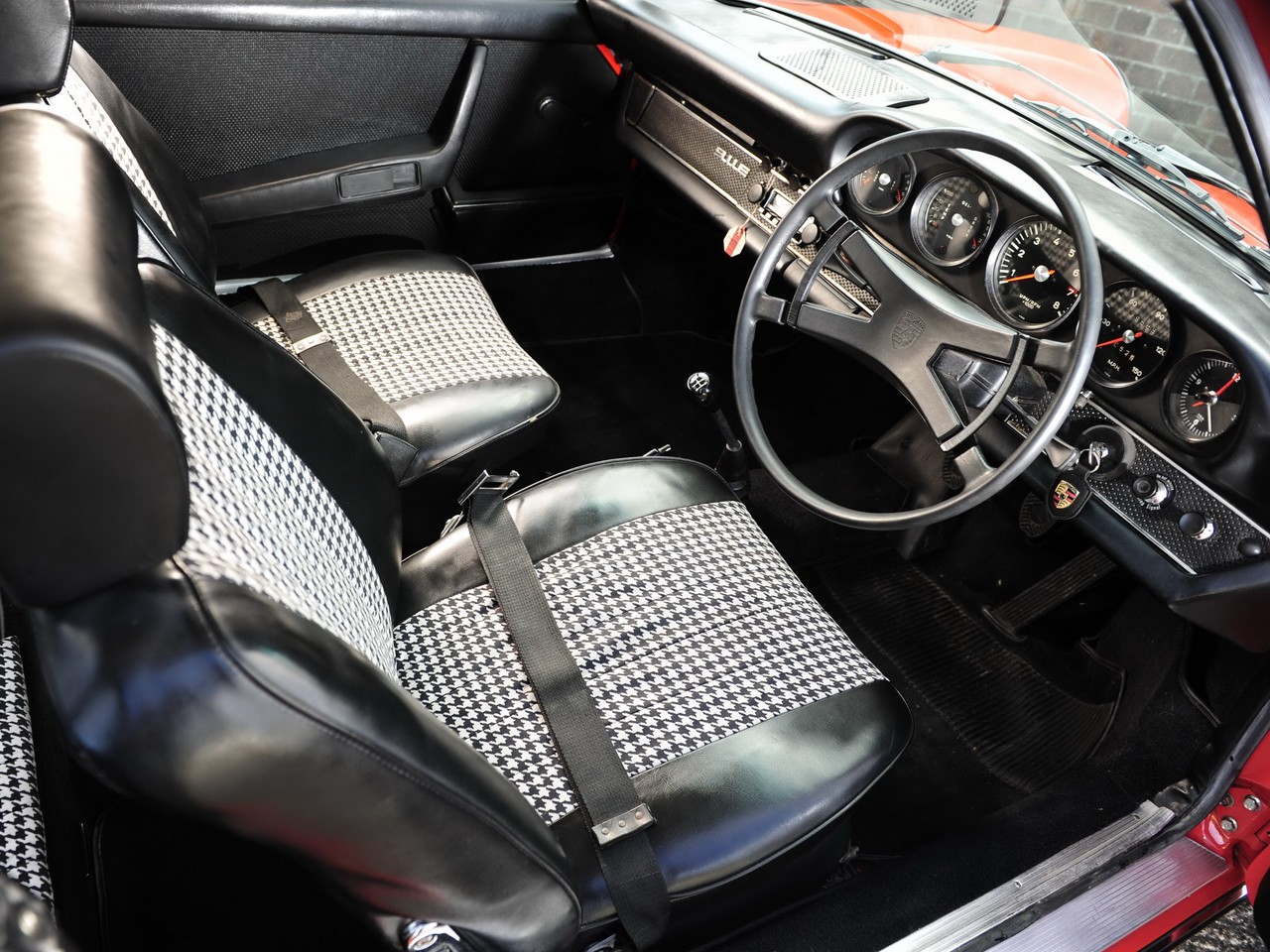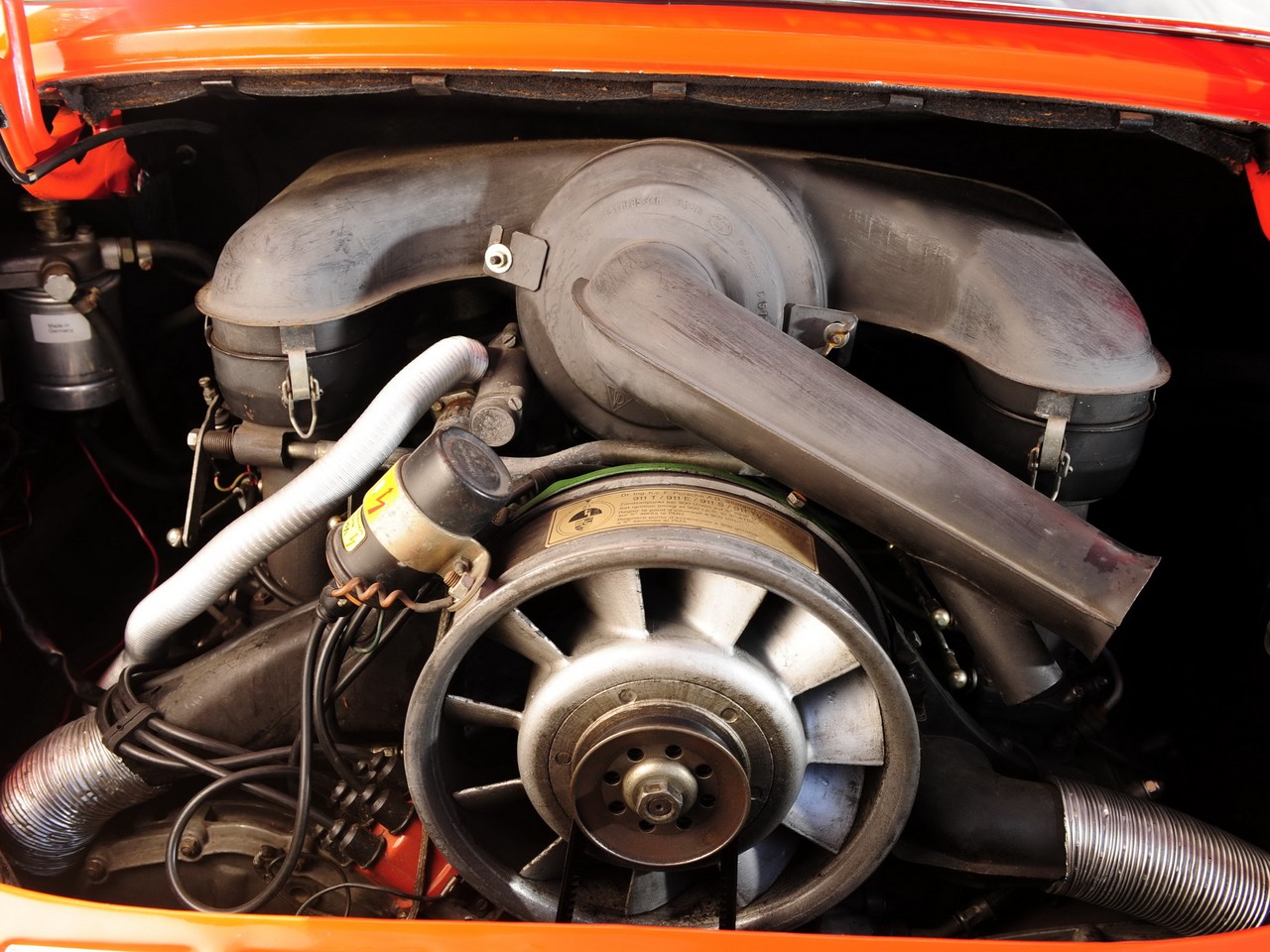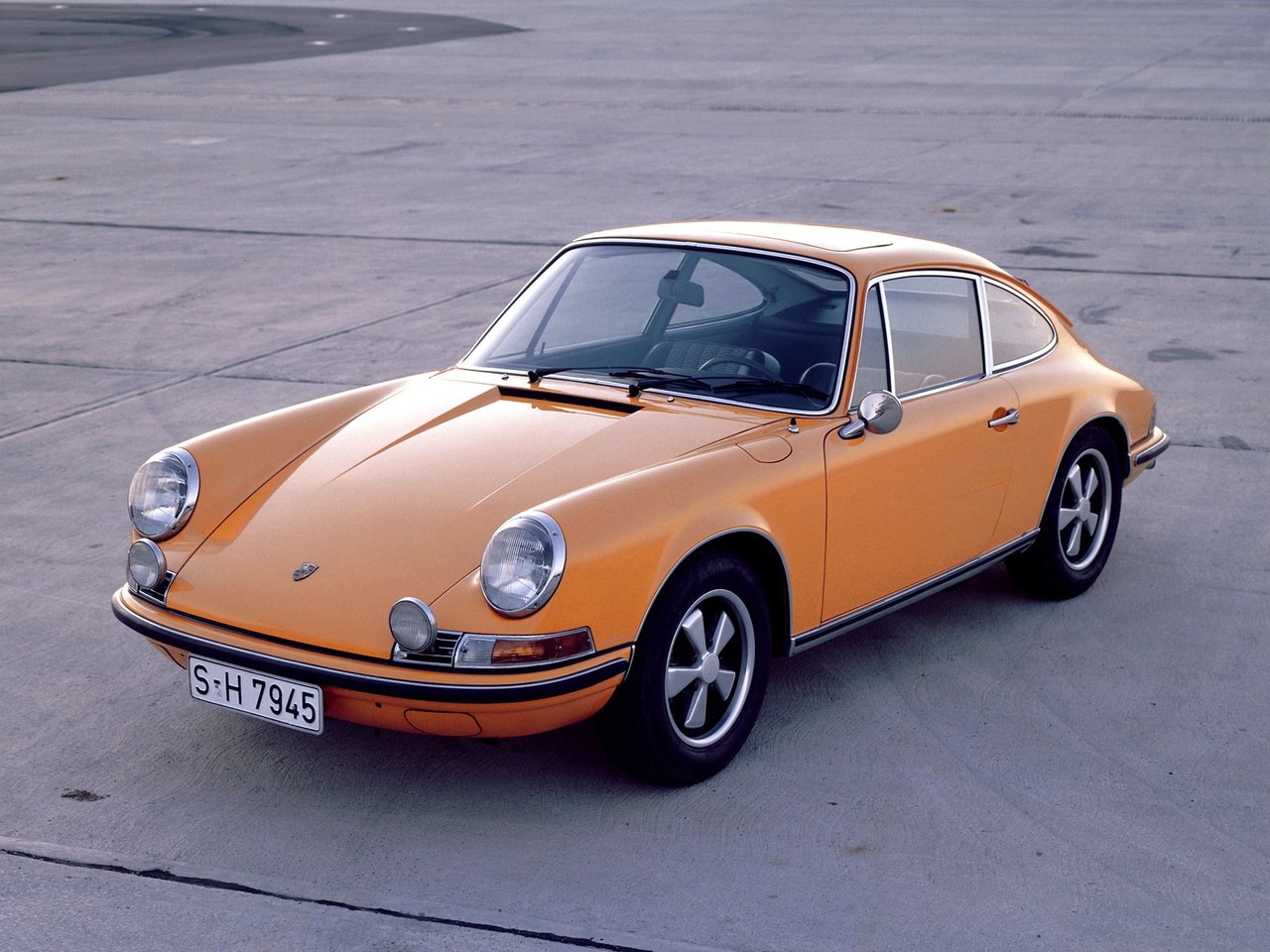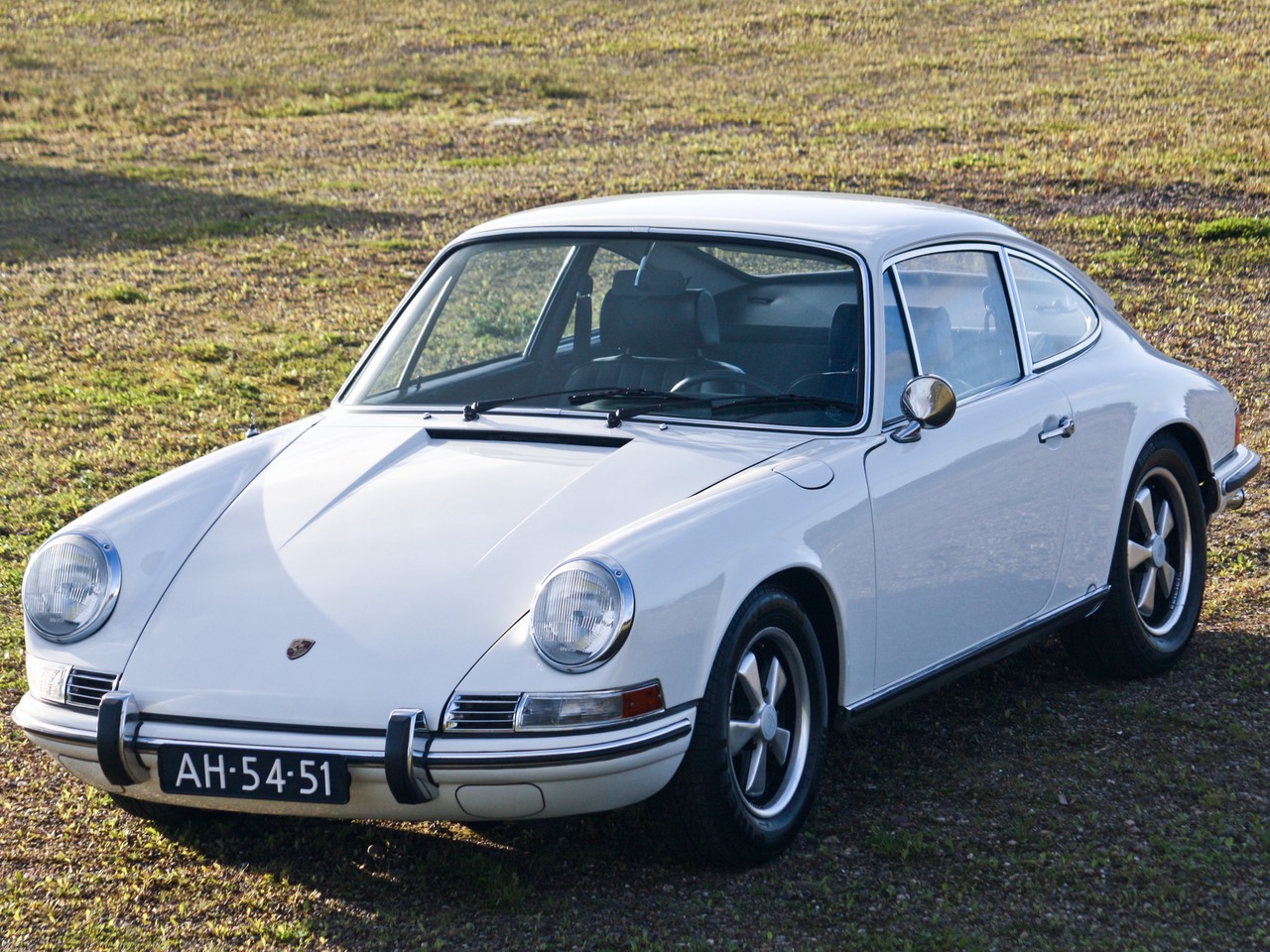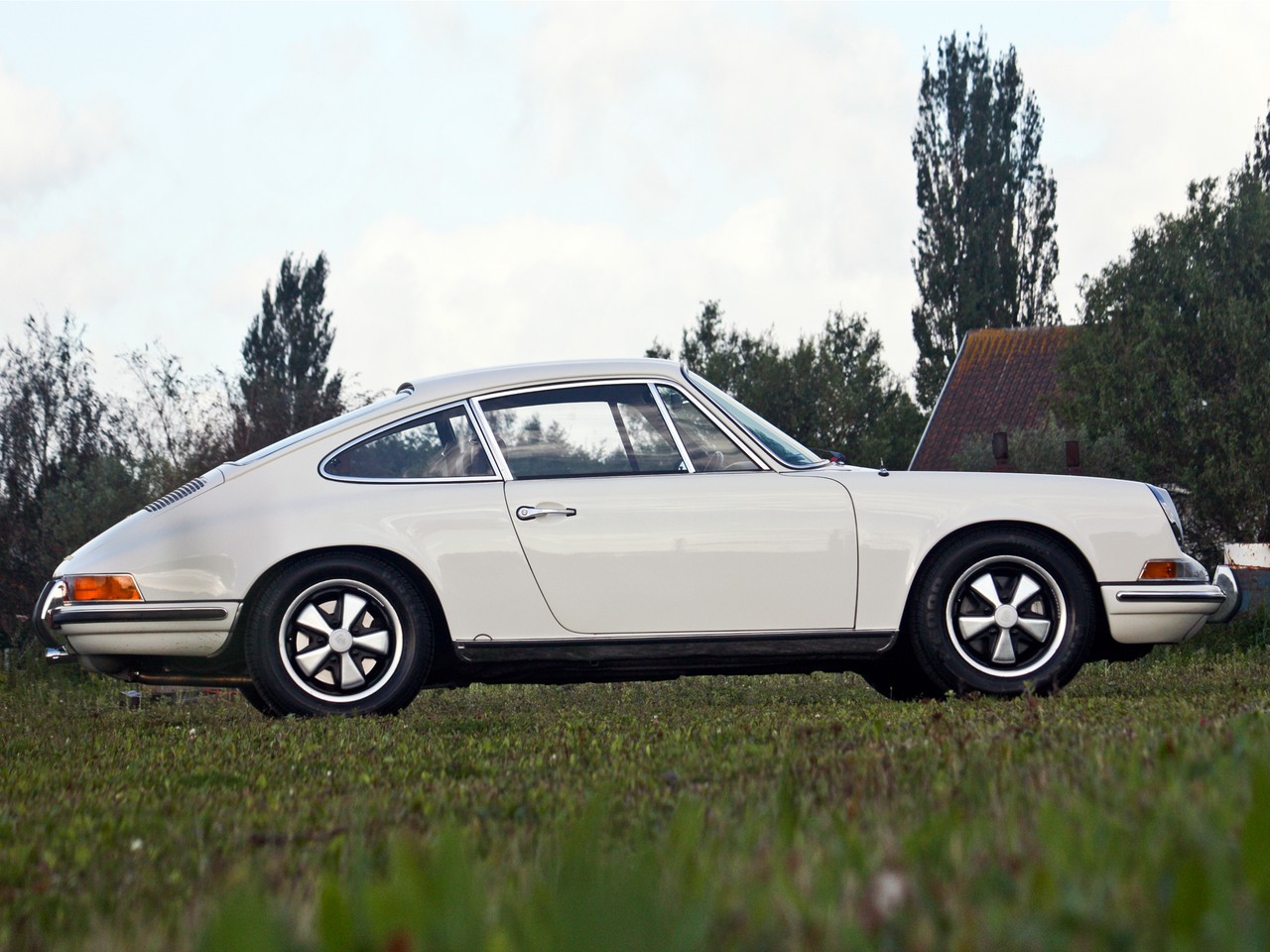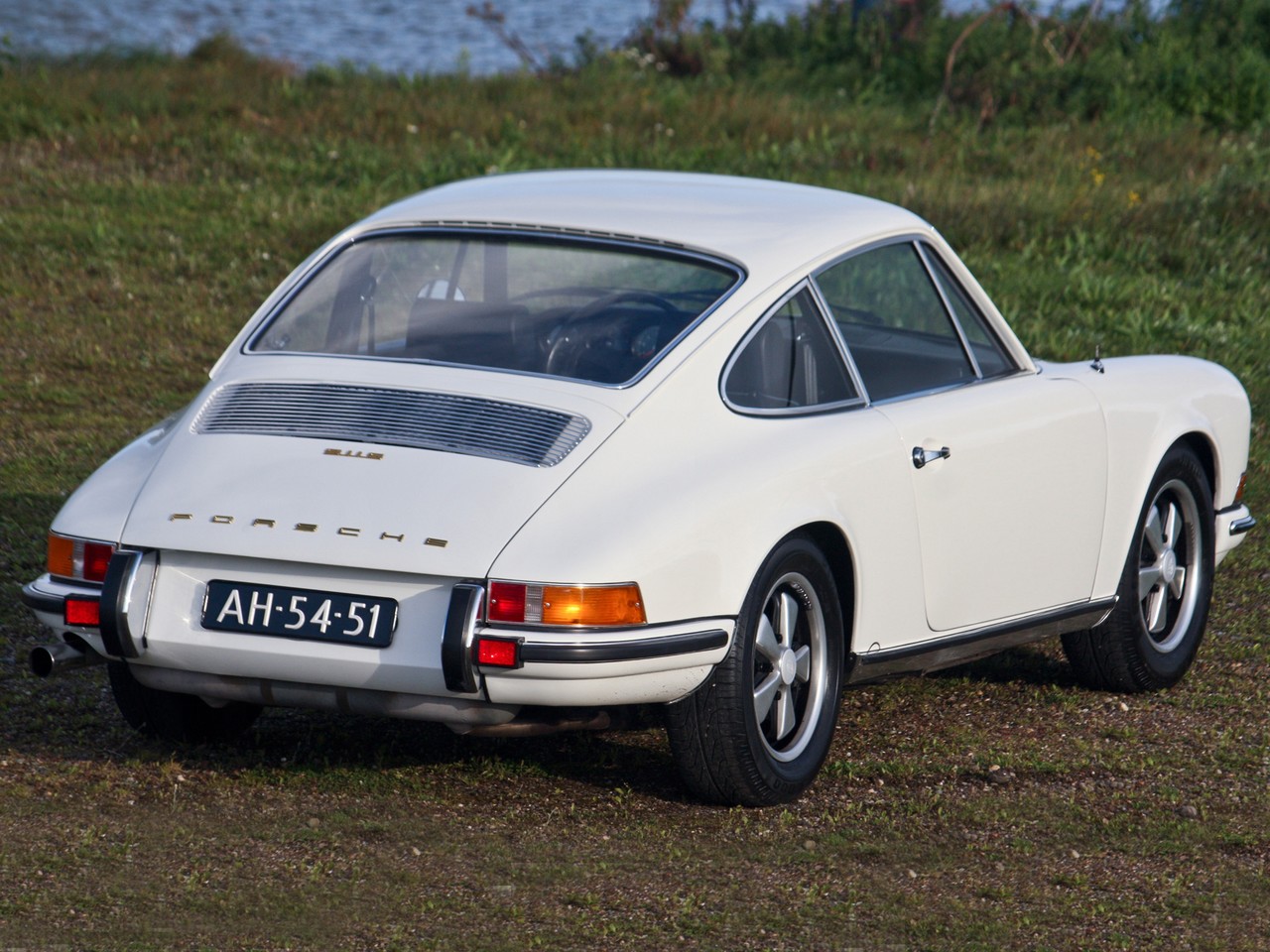
- The original, classic 911
- Willing 2.0-litre flat six-cylinder engines
- Effective brakes
- Steering is accurate…
- … but too direct
- Unforgiving dynamics: steady-state understeer, transient oversteer and bump steer
- Lift-off oversteer
- Chain tensioner failure can destroy the engine. Owners should consider fitting mechanical tensioner guards.
Review: Porsche O- and A-Series 911 Coupe (1964-68)
Overview
Production of the 911 Coupe commenced in September 1964 at Porsche’s Zuffenhausen factory in Stuttgart, Germany. A rear-engined fastback, the rear-wheel drive 911 was originally powered by a 2.0-litre flat (or horizontally-opposed) six cylinder engine. In October 1966, production of the more sporting 911 S (S for ‘Super’) commenced. Production of the A-Series 911 from August 1967 resulted in a new 911 L variant which combined the body of the 911 S with the standard 911 engine.
Engines
Of the engines:
- For the 911 and 911 L, the air-oil-cooled 2.0-litre six-cylinder engine had an alloy cylinder block and head, a single overhead camshaft per cylinder bank (driven by roller chains), a triple-choke Solex carburetor for each cylinder bank, two valves per cylinder and a compression ratio of 9.0:1. From early 1966, however, Weber carburetors were used; and,
- For the 911 S, the engine featured triple-choke Weber 40IDS carburetors, raised piston crowns for a higher compression ratio (9.8:1), larger inlet and exhaust valves and a freer-flowing exhaust system.
Transmissions
The O- and A-Series Porsches were both available with a five-speed ‘Typ 901’ manual transmission. From August 1967 (A-Series production), a ‘Typ 905’ ‘Sportomatic’ transmission was available. The four-speed, semi-automatic Sportomatic transmission combined a conventional four-speed manual transmission with a fluid torque converter and an electro-mechanical clutch, thereby eliminating the need for a clutch pedal. Gearshifts required the driver to lift off the throttle and, when the gearshift lever was touched, the clutch would be disengaged via a valve and a vacuum servomotor. Once the gear shift was completed and the lever released, the clutch would re-engage. With its 2.15:1 gear ratio, the converter permitted brisk starts.
Dimensions
The original 911 Coupe was 4163 mm long, 1610 mm wide, 1320 mm tall and had a 2211 mm long wheelbase. For the B-Series 911, detailed below, the wheelbase was extended to 2268 mm.
Suspension
The 911 had independent front suspension with longitudinal torsion bars and lower transverse arms, while the independent rear suspension had semi-trailing arms and transverse torsion-bar springs.
| Engine | Trans. | Years | Peak power | Peak torque | |
|---|---|---|---|---|---|
| 911 | 2.0-litre petrol F6 | 5sp man. | 1964-67 | 96 kW at 6100 rpm | 174 Nm at 4200 rpm |
| 911 S | 2.0-litre petrol F6 | 5sp man. | 1966-68 | 118 kW at 6600 rpm | 179 Nm at 5200 rpm |
| 4sp semi-auto | 1967-68 | ||||
| 911 L | 2.0-litre petrol F6 | 5sp man. | 1967 | 96 kW at 6100 rpm | 174 Nm at 4200 rpm |
August 1967: A-Series 911
Production of the A-Series 911 commenced in August 1967. In addition to the 911 L variant, other changes included the introduction of 5.5 J x 15-inch tyres (previously 4.5 J), an upgraded brake system and stronger windscreens.
To reduce exhaust emissions, the A-Series 911 had belt-driven air pumps which directed warm air to the valve heads to oxidize hydrocarbons and carbon monoxide.
Visually, the A-Series 911 could be identified by its redesigned door handles (which replaced the push button with a lever inside the handle), larger door mirrors and matte-black and repositioned windscreen wiper blades.
Related links
Review: Porsche B-Series 911 Coupe (1968-69)
Overview
Production of the longer wheelbase B-Series 911 Coupe commenced in August 1968. The B-Series range consisted of T (Touring), E (Einspritzung, English: injected) or S (Super) variants.
Engines
Of the engines for these variants,
- The 911 T was the least powerful 911 due to its lower compression ratio (8.6:1) and milder camshaft profile. It was also fitted with tri-throated Weber 40 carburetors;
- The 911 E had Bosch mechanical fuel injection, Bosch thyristor ignition (HKZ) and a compression ratio of 9.1:1; and,
- The 911 S had the same fuel injection system but had a more aggressive camshaft profile, larger valves (similar to Porsche’s racing engines) and high compression pistons for a compression ratio of 9.9:1.
The B-Series 911 engines also had lighter magnesium crank cases, though these were not as strong as the aluminium crank cases of the O- and A-Series 911.
Dimensions
Although the B-Series 911 wheelbase was extended by 57 mm to 2268 mm, length (4163 mm), width (1610 mm) and height (1320 mm) were unchanged as the rear axle was effectively moved rearwards within the bodyshell.
Other changes
Other changes for the B-Series 911 included repositioning the 35 AH batteries to the front wheel arches (for improved weight distribution) and reducing the sensitivity of the steering to shocks through adjustments to the front suspension.
Visually, the B-Series 911 could be identified by the position of the circular access port for the rear torsion bar. For the O- and A-Series 911, this port was around 12 mm ahead of the rear wheel arch; for the B-Series 911, it was around 75 mm ahead of the arch.
| Engine | Trans. | Years | Peak power | Peak torque | |
|---|---|---|---|---|---|
| 911 T | 2.0-litre petrol F6 | 5sp man. | 1968-69 | 81 kW at 5800 rpm | 157 Nm at 4200 rpm |
| 911 E | 2.0-litre petrol F6 (FI) | 5sp man. | 1968-69 | 103 kW at 6500 rpm | 175 Nm at 4500 rpm |
| 911 S | 2.0-litre petrol F6 (FI) | 5sp man. | 1968-69 | 125 kW at 6800 rpm | 182 Nm at 5500 rpm |
Porsche 911 E
Positioned as the Luxury variant within the range, the 911 E had a unique front suspension arrangement whereby the front torsion bar was replaced with Boge hydro-pneumatic gas and oil filled struts. This self-leveling system was also combined with 14-inch Fuchs wheels and higher profile tyres.
Unfortunately, the Boge struts often developed seal leaks and the cost of replacement meant that they were generally replaced with conventional struts. From 1972, 911 E variants were fitted with conventional struts and the Boge struts were only available as an extra-cost option.
Porsche 911 S
Distinguishing features for the 911 S included ventilated front brake discs with aluminium Ate front calipers and the fitment of an oil cooler located in the right front fender.
Related links
